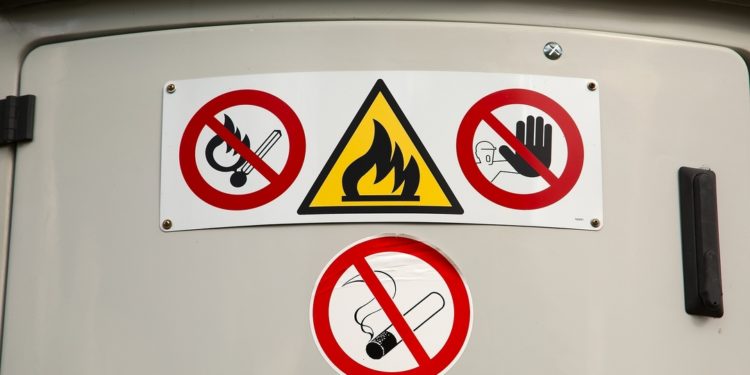5 Safety Protocols with GHS Labels

The Globally Harmonized System of Classification and Labeling of Chemicals (GHS) is a system for defining and classifying the hazards of chemicals and provides health and safety information labels for applicable products. It is a unique system that seeks to address inconsistencies among countries and the various systems used by them.
By doing so, the GHS has many benefits and plays a pivotal role especially in workplaces where the dangers of certain products need to be known before using them. Below are 5 immediate benefits that GHS labels provide to workplaces, regardless of industry.
1. Improved health & safety

Most importantly, the GHS improves health and safety practices among companies. Every single product that contains a chemical that could be hazardous is accompanied with a GHS label that specifies a hazard level (e.g. DANGER), a symbol, manufacturer information, precautionary and first aid information, a description of the product, and additional identifiers.
By listing all of this information, employee safety has increased and workplace incidents and fatalities have decreased as awareness of what products are composed of, what can happen if misused, and first aid steps that need to be taken if needed is more prevalent. It is estimated that GHS labels under a uniform system can help prevent about 585 workplaces injuries and 45 deaths per year.
2. Consistency

Because GHS labels are uniform, or harmonized, across the globe, they create less confusion regarding potential hazards as everyone is trained on the same system regardless of language barriers. The labels include one of nine pictograms and the symbols are universal, guaranteeing that people around the world will understand and take proper precautions.
With this harmonized system, the facilitation of trade among nations and safe transportation across borders can occur as all parties will be familiar with GHS labels. Before the arrival of the GHS labels, about 100 different labels were used around the world. The GHS will allow confusion around chemicals to be avoided and guarantees that all products have one single hazard symbol on them and that everyone is familiar with them.
3. Cost reductions

It is estimated that workplace incidents that involve improper handling of hazardous materials cost a combined $250 million per year. Therefore, as awareness of hazardous content in products is more widespread, such incidents will decrease and money needed for extended health care and compensation is reduced.
Since GHS labels are consistent and uniform, all parties that will be handling them can complete the same training save for different language requirements, allowing for one training regimen to be developed that will also amount to savings.
4. Improved quality of information

The arrival of GHS labels has significantly improved the quality of information available for employees handling hazardous materials. Before the GHS, classifications systems used by countries around the world were diverse with multiple standards and classifications being used for the same hazard. This issue is no longer present under the GHS with all labels having consistent information.
While the GHS is not compulsory under the law, many nations have adopted it and it has led to a significant increase in awareness and drops in workplace incidents and fatalities.
5. Increased productivity

The GHS has led to significant increases in productivity for companies located in countries that have adopted it. As mentioned previously, the system promotes easier international trade and transportation across borders. This will allow companies to expand their repertoire of trade partners without restriction as long as both parties employ the GHS.
As employees are made aware of chemicals in products and potential hazards, the guess work is taken out of potential consequences of mishandling the materials and work can be completed safely and efficiently. Education and training on GHS labels will lead to a reduction in workplace incidents, allowing employees to stay on the job and complete their duties.


